
18 minute read
COACH’S SPEECH HEAD POSTERS COACH’S SPEECH



Every year, around late October, huge posters heads of the seniors are hung around the pool, tennis court, and the other sports facilities around campus. A professional photographer takes pictures of all the seniors and they are blown up in these large posters. However, three teams have a different take on senior portraits and make giant foam heads for each of their seniors. Football, dance, and cheer all do this on the last football game of the season.
Linebacker and senior Jack Newman shares his appreciation for the tradition.
“I love having a day dedicated to those who have been through thick and thin for the program— the fat heads are my favorite traditions cause they are just a hilarious way to celebrate the team,” Newman said.
Gifts Gifts
On a competition night like Senior Night, the coaches always make sure to make a speech to celebrate the high school careers of each senior.
In water polo, Coach Deke Rowell makes a yearly speech introducing the seniors and giving an inspiring toast about how each one made an impact on the team.
Coaches are people to witness each team member’s improvement as the years go on. Watching students grow as athletes over their high school career is an amazing experience for them. Senior Paige Henry shares the importance of the coach’s

“I feel like it’s something that everyone always looks forward to and motivates you to keep going through all four years,” Henry said.
“It is something I am always going to remember because it kept me pushing through the season that was most difficult.”
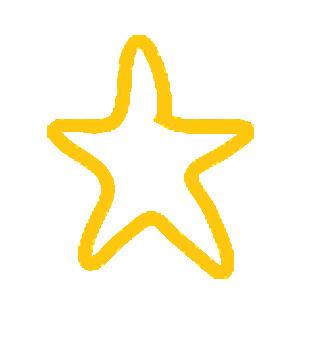




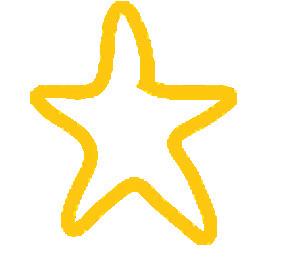









Many teams’ senior nights are planned by the juniors and one of the most common things they do is to make personalized posters. In golf, the juniors decorate each poster for each senior with pictures of each senior during the season and sign a sweet note for their seniors to look back on. After the game, they throw a party with lots of food including pizza, snacks, and a cute golf-themed cake. Some sports are even given some funds in school and depening on the senior class.
In cross country, their gift tradition is an interesting one: socks. Prior to the pandemic, the gifts depended on the number of seniors of the team. In 2019, the senior class size was only 5 to 6 runners so they were given more pricer gifts: hydro flasks and bags of candy. In 2020, the senior class size was very big and due to the pandemic, there were no gifts given. In 2021, the seniors were given socks and it’s been made a tradition for the coming
“Socks… are a much cheaper and useful option,” varsity runner Kyle Park (‘23) said. In dance, their gift tradition is flowers. Every year, each senior gets a bouquet of flowers to celebrate their hard work for the past few years. Last year, they also carried out a fun event to have one last team-bonding: at 6 am in the morning, the other team members picked up all their seniors at their individual houses and took them to Denny’s to eat breakfast.
In the Scandinavian countries of Norway and Sweden, the yearly average temperature is 46 degrees Fahrenheit. The coldest ever recorded temperature is 63 degrees below zero. To put that in perspective, at 45 degrees Fahrenheit, human breath condenses. At 32 degrees, skiing –– a criss-cross pattern of skiing on groomed tracks. In 1924 in France, biathlon appeared for the first time in the Winter Olympics. The race breakdown went as follows: a 20km skiing course (skied over five 4km laps) with four shots after each lap. The shoot- and alternated prone (lying down), standing, prone, standing, prone, by lap, with a fixed time penalty added for each missed target. The athletes started in staggered time and the total penalty minutes were added at the end to their final time. the Auburn Ski Club (ASC) is located in Soda Springs, California (a 15-minute drive west of Truckee) and offers biathlon teams a place to train –– alongside the more typical activities of alpine and nordic skiing and snowboarding.
Biathlon is a sport that has a rich history and a passionate community, yet is unknown to a vast majority of people. Learn about biathalon and its committed athletes, both on the local and Olympic scale.
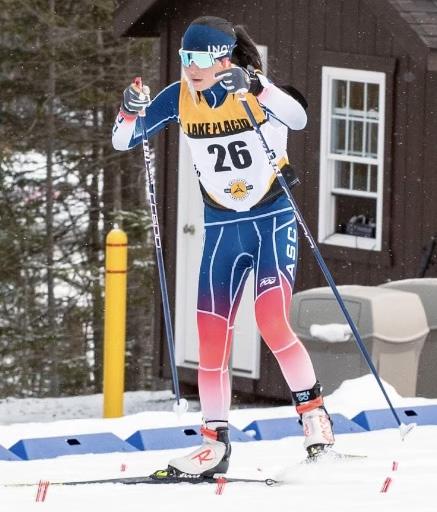

The ASC biathlon team (composed of individuals of all genders and ages) is coached by Dan Warren, who has been a part of the sport for over 20 years, but only started coaching biathlon for ASC this past year. In his younger years, he was primarily a downhill skier and worked as a Ski Patrol director in the Tahoe area. He also has a background in Nordic skiing and has participated in many such races. After retiring from his position on the Ski Patrol, he worked as head groomer for ASC and continued to race biathlons, both at the national level in the US, and internationally for the Masters Olympic Games. That is, until he took the job as head biathlon coach for the club.
“The reason I took the job is that I enjoy the comradery of the biathlon family,” Warren said.
“Even at the world
Meghan Lemoine, a Paly sophomore, has the luck of being able to be part of the wonderful biathlon family of ASC. With a splash of freckles, a soft voice, and a polite demeanor, Lemoine seems like a typical 15-year-old high-schooler. But Megan’s participation in biathlon sets her apart. In the winter, while thousands of other Palo Altans take I-80 across Donner pass and onto the slopes of Tahoe for alpine skiing and hot chocolate, Lemoine is different. She sets out on the slopes with Fischer skis strapped to her feet and a .22 caliber änschutz rifle slung over her shoulder.
Unlike better-known sports like basketball and football, biathlon is not offered at high schools in the U.S. and is a far less popular recreational winter sport than your typical alpine skiing. Because of this lack of publicity, Lemoine fell in love with the sport not through her school, but partially through family influence and partially through serendipitous timing.

“My dad always really liked biathlon,” Lemoine said.
“We started watching the [Biathlon] World Cup together and over the pandemic learned that there was a range near us.” thermore, proper cross-country skiing areas are less common than downhill slopes. Lemoine feels fortunate to have discovered the ASC.
The “range” refers to the shooting course, a necessary aspect of biathlon.
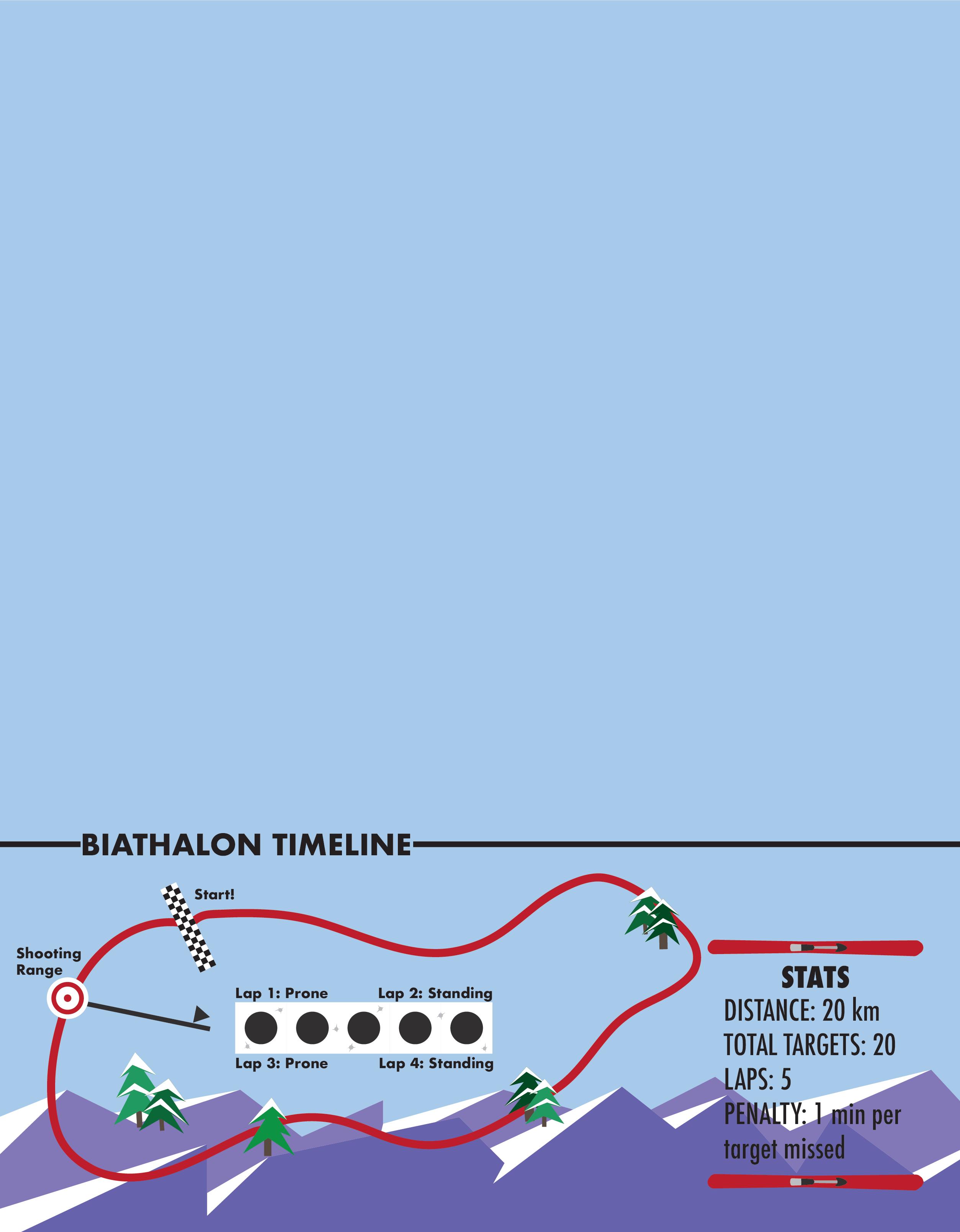
“It’s a very small team,” Lemoine said.
“On the cross country skiing side there are quite a few girls my age but on the biathlon side I’m the only girl in my age group. There’s one other boy in my age group who comes consistently; it’s small.” and that extends down to our local club. I also enjoy seeing biathletes when they have successes and share in their excitement when they perform well.”
Warren notes that although the number of members on the team is small, biathlon is a growing sport in the US, especially for women.
“Women’s biathlon is the number one watched sport in Europe and the interest is growing a lot in the USA,” Warren said.
Due to strict gun and shooting range regulations within the U.S. and especially California, it is often difficult to find safe and well-maintained ranges to practice shooting. Fur-
“What is interesting with the ASC Biathlon group is that the majority are women over the age of 50. They won the team gold medal at the 2020 World Master games in Seefeld Austria”
So, despite its small size, the ASC adequately provides Lemoine with a physical location to train as well as the emotional support and advice of coaches. Based on the International Biathlon Union (IBU) standards, and according to the coach, the club is a unique training ground for aspiring biathletes.
“We are the only [biathlon course/ range] on the West Coast,” Warren said. “[It’s] at a very high altitude: 7,100’ (IBU limits ranges to 5,900’). We also receive more annual snow than any other range in the world (354”) [and] have the luxury of having 7 nordic ski areas [in Tahoe area] within a 45-minute drive of each other.”
Because two different complex components comprise the sport –– skiing and shooting –– each practice at the ASC looks a little different, and Warren uses the support of various coaches, all of incredible merit in the biathlon world, to provide her with what she needs.
“I have ski training coached by our Nordic coach, Gus Johnson,” Warren said. “Some of the others in Megan’s age group use coaches from Sugar Bowl academy and Tahoe City XC. I also use coaches Glenn Jobe (1980 olympic biathlete) Dave Eastwood (US Master gold medalist) Carol Lyda (deceased husband was the US biathlon coach at the 28th Olympic games), [and] Jordan McElroy, former National Biathlon Team member. I am good at the big picture of range safety, maintenance, and general coaching, [but] I use a lot of resources to give all the athletes the best coaching available outside of US national team coaching.”
Lemoine trains with the ASC on weekends throughout the winter months and thoroughly enjoys the complexities and challenges each practice provides.
“For a biathlon practice, we set up the range first, and then zero our sites to make sure they are working for the conditions,” Lemoine said. “If it’s a precision practice, then our coaches will work with us one-on-one with drills, but if it’s a more general practice it will be [ski] combos or intervals; we go on our own, ski around and then come in. The course is pretty hilly so the skiing is really fun but also really tiring. Also, we do mini shooting competitions and games that are really fun.” Because biathlon is a winter sport, it is important that biathletes stay in shape during the offseason months, both in terms of cardiovascular health as well as in terms of skiing and shooting skills. Fortunately, Warren notes, there are many ways to do this.
“Cross country running, hiking in the mountains (a favorite for Europe world cup level biathletes), cycling, both road and or Mountain bike, core work, and roller skiing,” Warren said. Roller skiing is typical of biathletes because it provides technical skiing practice as well as cardio. Roller skiing is when skis have wheels instead of metal edges and are used on hard surfaces like paved streets. It emulates the crisscross action of biathlon skiing. During the biathlon offseason, Lemoine mixes this with other forms of cardio.
“When I’m [in Palo Alto] I’m running and roller skiing around the neighborhood,” Lemoine said.


Despite the benefits of roller skiing, Warren points out that, unlike keeping up shooting technique, keeping up skiing technique with roller skis is not imperative during the offseason.
“There are some high-level biathletes who roller ski very little but keep their cardiovascular system in condition by using other training but all [biathletes] shoot in the off-season,” Warren said. “Summer is where we concentrate on shooting drills, position in prone and standing, concentration and rifle set up and fit for the individual athlete.”

While some go to shooting ranges to practice firing in the various positions with live rounds, others, like Lemoine, “dry fire,” usually at home. This simulates the discharge of a gun but without the danger of bullets, and helps to maintain some of the skills required for accurate marksmanship.
“Dry fire drills are very important to strengthen the entire muscular system to keep the rifle as quiet as possible while you just stress your whole body by skiing hard,” Warren said. “Standing dry fire drills are vital for success during the season. There is a noticeable difference between those who practice and those who do not. Dry fire also makes getting into position to shoot an intuitive process, although it may look easy it can take several years for some athletes to have a process from skiing with a rifle on their back to a safe, stable shooting position in a matter of seconds.”
The importance of keeping in shape technically and physically ensures that come winter season, athletes are ready to race.
Lemoine, through ASC, is able to race multiple times a year.
“I started competing two years ago,”
Lemoine said. “Most of what I do are just among the club members [but] last year I went to Nationals.”
Lemoine is following in the footsteps of former ASCbiathlete Joanne Reid, who graduated from Gunn High School in 2009. Reid competed at the 2018 Olympics, where she raced the sprint and individual, placing 86th and 22nd, respectively. Four years later, she competed in the 2022 Winter Olympics, adding the pursuit course to her spirit and individual events. She finished 29th, 34th, and 57th, in those respective events.
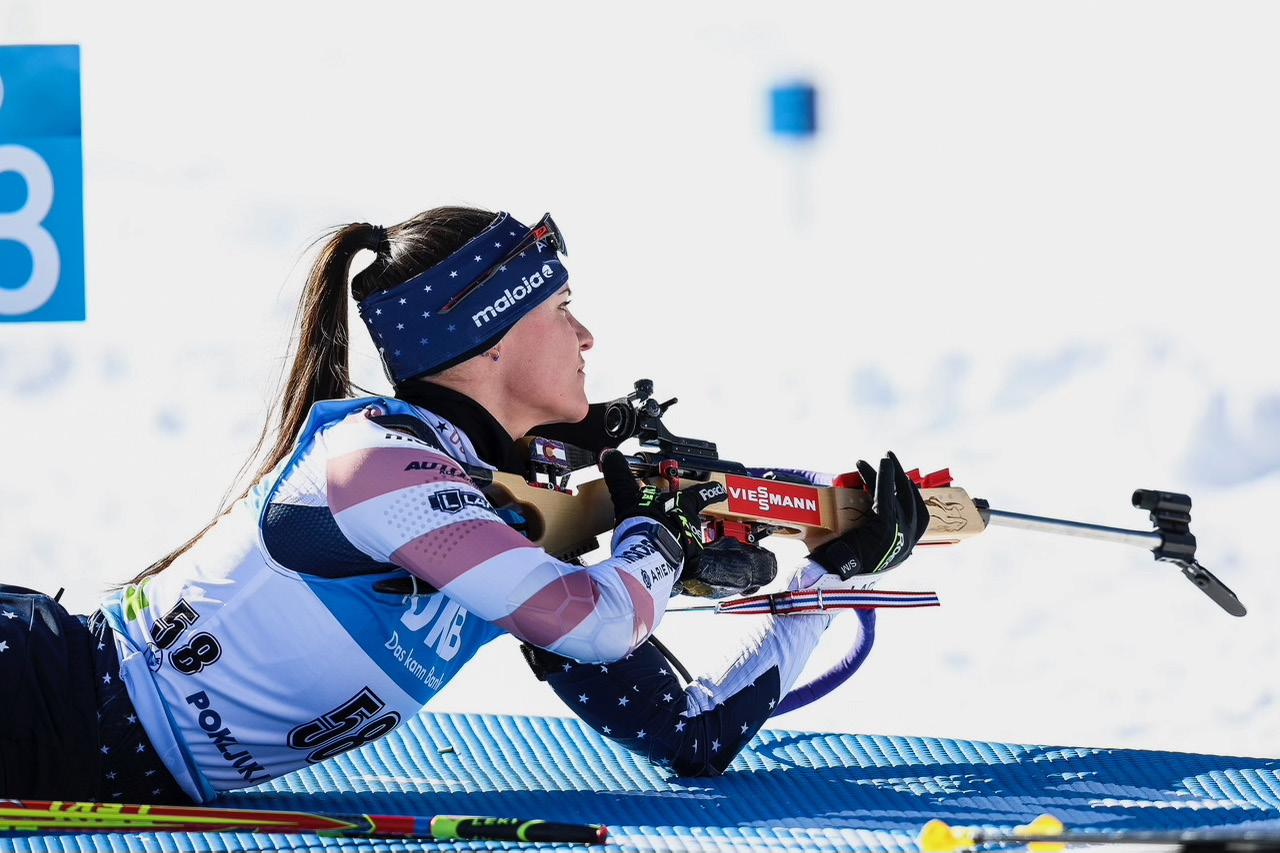
Reid started out as a nordic skier, not a biathlete. In high school at Gunn, she ran cross country and track and skied on the weekends in the winter.
“People thought I was constantly on downhill ski vacations, and my friends would ask why I could never hang out on weekends,” Reid said. “I was training high hours as a nordic skier in high school. I would leave during my class-free periods and train (roller skiing) in Los Altos Hills and come back to class afterward. Then I would go to running practice after school.”
This commitment to Nordic skiing meant Reid often had to sacrifice other aspects of her life.
“[Training] took all of my time,” Reid said. “I lost some friendships to this, so the ones that lasted are more meaningful to me.”
During her senior year of high school, Reid was recruited to the University of Colorado at Boulder for cross-country skiing on full scholarship. She went on to win an individual NCAA title in 2013, and graduated that same year with a degree in applied mathematics. Growing up in snow-free Palo Alto, the recruitment for skiing as well as the NCAA win came as a shock to many, both abroad and at home.
“When I tell people I grew up four hours from [the] snow they look at me like I have two heads,” Reid said. “Even funnier, my student counselor didn’t believe me when I said I was being recruit- ed –– in her defense, who recruits skiers from places with no snow? –– and told me if I did not have a colored envelope, I probably wasn’t [being recruited]. I did not get a colored envelope. I did get a scholarship.”
Biathlon is currently not an NCAA sport, primarily because of the safety concerns that arise with shooting. This means that high school biathletes, like Lemoine, will not have the opportunity to compete collegiately. It also means that the US biathlon team often has to recruit elite cross-country college skiers that are willing to switch to biathlon in order to fill their roster. This was the case for Reid. As a member of Team USA, Reid went to two rounds of Olympic Trials as well as two Olympic Games, in 2018 and 2022. According to Reid, these experiences were intensely competitive and pressurized. And although rewarding in the end, they are also memorable for other reasons.
“I would not describe [the Olympic Trials] as any type of fun,” Reid said. “There is a lot on the line at a trials event. People can spend their entire career fighting for a start at the Olympic Games and still fail. I had friends and teammates who failed, and I think no less of them than those who wore the Stars and Stripes with me.”
From both respective Olympic Trials, Reid went on to compete in the Olympics. Unlike the balmy temperatures in which Summer Olympians compete, Winter Olympians often have to execute their best performances, and have their best races, in the face of harsh, cold con- ditions. Reid remembers this vividly in 2018 at Pyeongchang and again in Beijing in 2022.
“Both [olympic]] venues were brutally, ferociously cold and savagely windy,” Reid said. “That’s a tough situation for a precision marksmanship sport — the wind [changes] bullet trajectories, dressing for cold affects mobility in shooting positions, and freezing a trigger finger mid-competition almost certainly means misses. It was a struggle to stay warm out there [in] both places.”
Beyond the difficult weather conditions, the Beijing Olympics were particularly memorable because they occurred during the Covid-19 pandemic, creating a strange, surreal environment for the athletes.
“Covid made it bizarre in so many ways — we took a covid test every single day, without exception,” Reid said. “There were no spectators allowed, we couldn’t leave the closed loop of the village. Every single volunteer and worker in the village was head to toe in disposable one-piece outfits, complete with booties, gloves, masks, and face shields. It had the bizarre effect of making everyone just look otherworldly — coupled with the extreme cold, isolation, and ban on visitors and spectators, we may as well have been on the moon.”
Reid notes that harsh weather and Covid complications notwithstanding, competing in biathlon at the Olympics was a mentally challenging and spiritually rewarding experience.
“The eye of the world turning towards you for a month of difficult competitions is never easy, especially in a sport that has such a major mental component,” Reid said. “It’s easy to get derailed by nerves, but that difficulty is what makes it both fun for us to do, and exciting to watch.”
To younger biathletes like Lemoine,
Reid is an inspirational figure for biathlon within the US. Lemoine looks up to her not just because they both trained and competed for ASC, and grew up in the same town, but because of how far Reid has come in her career.
“She had a great college skiing career,” Lemoine said. “Now she is an Olympic Biathlete and a World Cup Biathlete even though she didn’t necessarily have as much time on snow as other people did.”
Biathlon has existed for over three centuries. It has expanded its reach and is growing in popularity in many countries.
It has grown from one event –– the individual –– to now include many variations, most notably relays. It is leading the frontier in terms of equal pay and viewership across genders and pushing the boundaries of human limits.
The sport puts athletes in snow-white expanses, in harsh, windy, cold condi- tions. Biathlon forces athletes to calm their breathing, still their heartbeat, and hit a pea-sized target fifty meters away. It combines an intense physical event with an incredibly mentally difficult skill. In the eyes of Lemoine and Reid, there is no better sport for people to do.
“If I am going to encourage someone to start a sport, I would like to be proud of it,” Reid said. “And I am absolutely proud of biathlon.”
1. LEARN HOW TO SKATE SKI

4. LEARN SAFE RANGE PRACTICES
2. DEVELOP A GOOD STANCE
5. START USING AN AIR RIFLE AT THE RANGE
3. TAKE A BEGINNER PROGRAM AT A BIATHALON RANGE
6. ENROLL IN OPEN RANGE SESSIONS OR FULL PROGRAMS

Countless athletes around the country dream of playing sports at college or professionally.
Since 1906, when the NCAA — the entity that controls college sports —, was created, these have been mutually exclusive dreams. In 2021, however, things changed.
Since its inception 116 years ago, collegiate athletes have always been subject to the NCAA’s “principle of amateurism,” which says that student-athletes partaking in collegiate sports should be motivated by the educational opportunities provided and not be exploited by larger commercial enterprises.
However, while college athletes have been expected to play for their love and passion for their sport, the NCAA brings in over one billion in profit annually. Until 2021, collegiate athletes could receive scholarships from schools but could not be directly paid to play.
“I think it’s great that collegiate athletes can now make money from sponsorships and commercials,” junior cross-country runner Allie Difede said. “Some athletes are outstanding and bring a lot of recognition and spectators for their school’s sport, and they should be compensated for that since it brings more money for the school.”
Despite many who agree with Difede, others do not like the idea of college athletes being able to profit from their tal-
by
ent. The discussion surrounding paying for collegiate athletics has been controversial for several years but reached its peak in 2021 with NCAA v. Alston. The rare sports-related Supreme Court case revolved around the compensation of collegiate athletes and the profitability of colleges and universities from sports. In July 2021, the Supreme Court ruled against the NCAA in a 9-0 decision that collegiate athletes should be able to benefit from name, image, and likeness; NIL. However, it upheld the lower court’s finding that the NCAA violated the antitrust law by restricting education-related benefits (essentially saying that the NCAA held a pseudo-monopoly on college athletes). In more colloquial terms, the ruling meant that famous athletes could use their “name, image, and likeness” for ad deals, sponsorships, and even Youtube channels or TV shows. While this decision still does not allow college athletes to receive money through direct payments (i.e., the pay- to-play that happens in pro sports), it has allowed athletes to profit from endorsement deals, commercials, social media, and other monetary activities outside of school.
“I think NIL does enough for athletes because it impacts athletes depending on how prioritized they are,” Paly varsity football player Ikinasio Tupou (24’) said. Many also argue that NIL provides college athletes with much-needed funds.
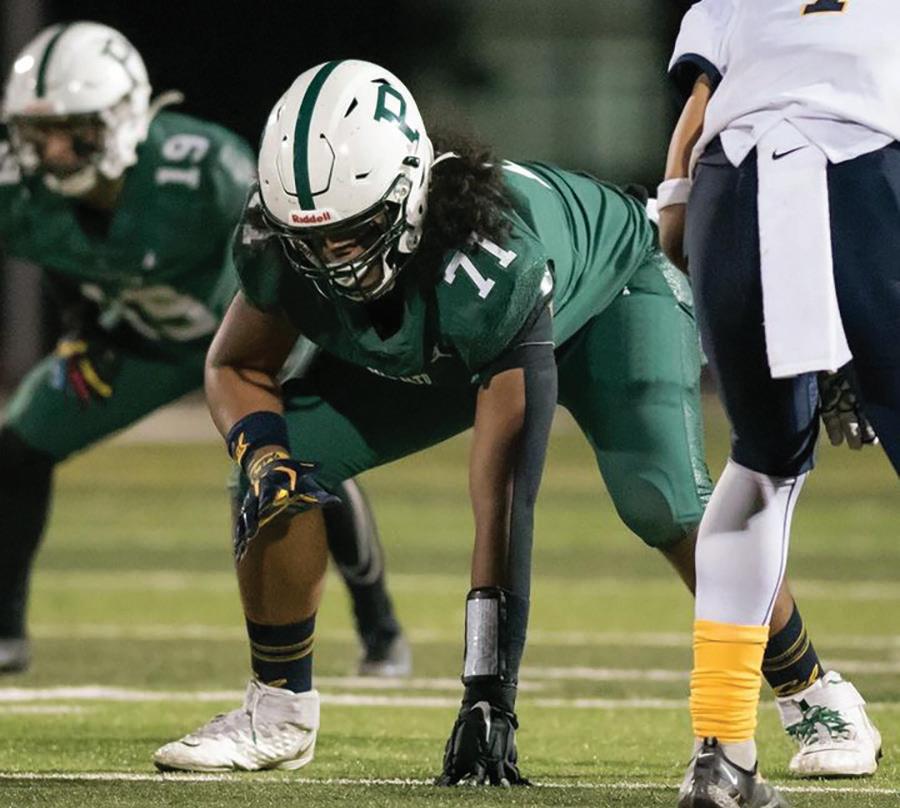

Previously, college coaches and NCAA executives earned more than 6 to 7 figures. Schools like the University of Louisiana made more than $45 million from sports revenue (ticket sales, TV viewership deals, etc.) but only paid out $400,000 annually in scholarships to their athletes. 85% of college athletes live below the poverty line and owe thousands in tuition. Those who support NIL point out that these individuals should get money from sports, not the NCAA or the coaches.
The NCAA requires all athletes to have health insurance to play. The NCAA does not provide these athletes with health insurance and reserves the right to refuse to pay for an athlete’s treatment in case of an injury. This policy places poor athletes at a significant disadvantage. If an athlete from a poor background cannot pay for insurance, they cannot play.
Despite those arguments supporting the passing of NIL, many oppose it for various reasons, one being that playing in college should be because of the love of a sport. Football Coach Jason Fung partially agrees, noting that NIL takes something away from the sport itself.
“It’s social media; how much can you get your name out there? So it’s a lot of components,” Coach Fung said. “It’s not just [about] playing football anymore, which isn’t always the best.”
Other critics are against it because athletes should focus their attention on their academics — arguing that scholarships and a good education are adequate compensation.
Most college athletes do not make it to professional basketball or football and instead go into the real world for work. Only 1.2% of college athletes go pro in basketball or football. The NCAA argues that athletes who participate in collegiate sports have a higher graduation rate (86% in division 1, 71% in division 2, and 87% in division 3. Compared to regular students, who have a graduation rate of 63.8%, NCAA athletes are 20% more likely to graduate college.), the college education is their payment for their play. Furthermore, they say, NIL will result in less money going towards scholarships and less funding for college sports because the cash will instead flow into the pockets of top-tier athletes.
Matteo Lisi, a junior volleyball player, understands the NCAA’s argument but supports the recent decision on NIL because it benefits skilled collegiate athletes.
“I think college athletes getting a scholarship and good education is a good enough compensation,” Lisi said. “However, athletes should also be able to get money from endorsements and deals off their name without the NCAA intervening.”
Furthermore, critics of NIL point out that it has perverted the college recruitment process by creating a gray area between NIL deals and direct pay-to-play. Through NIL deals with school-affiliated businesses, schools can “pay” prospective athletes to attend their school under the pretense that it is an “endorsement deal.”

High-profile boosters are rolling out five to seven-figure NIL deals to prospects and athletes from other programs to attract them into collectives, exclusive, and high-priced clubs.

The companies and the school’s collectives share a common goal: fill college rosters with top athletes with influen-
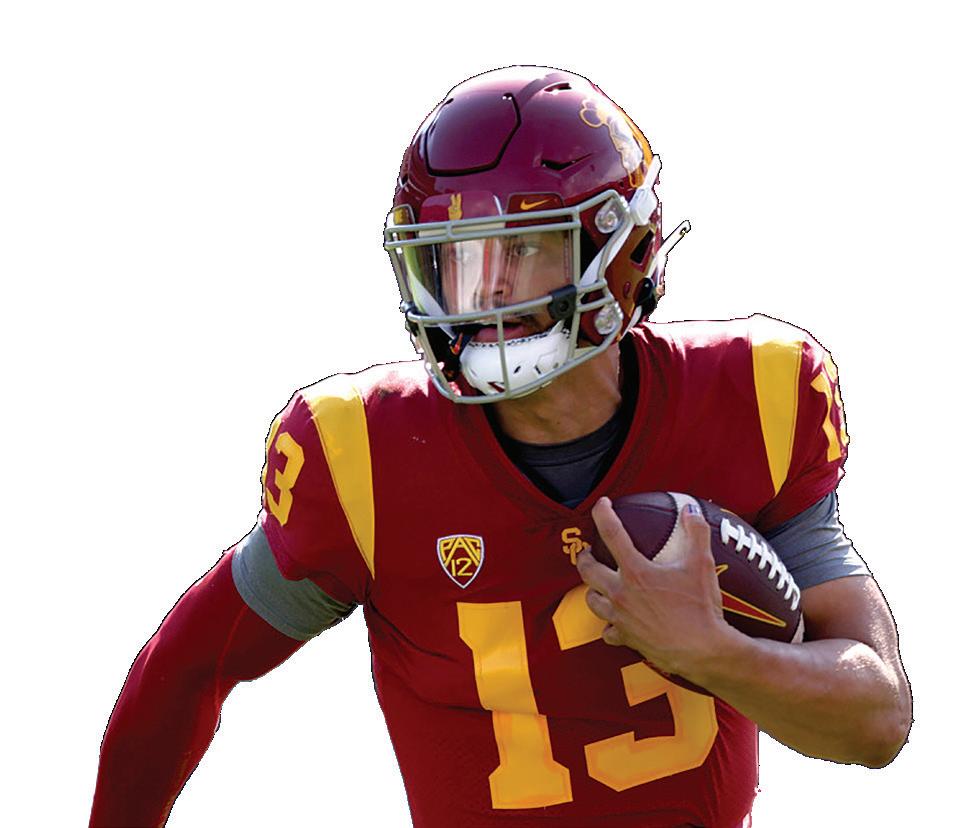
In NCAA v. Alston, the Supreme Court upheld the district court’s ruling that NCAA violated antitrust laws with a 9-0 ruling tial NIL deals. Additionally, collectives change how college recruiting works, making it pay to play with officials claiming that boosters run the entire recruitment process through money. Many of these deals bypass current NCAA guidelines, and all eyes are on the NCAA to create new policies that reduce the current gray area where these boosters operate.
“It’s a marketing ploy, so they have the money to do it,” Fung said. “You can’t fault them.”
Despite these contrasting views, the reality is that NIL has changed the lives of many. An estimated three out of every four NCAA athletes have made some form of NIL deal in the past year, be it from smaller ad deals, YouTube video commercial money, or an Instagram post. The average NCAA athlete has made $3,711 from NIL deals, and some top athletes have even made six-figure deals.
The NCAA aims to crack down on those above “gray areas” of booster involvement in the recruiting process. However, many believe that the NCAA may face backlash in doing so. So, for now, NIL allows college athletes to earn money and benefit from their name, image, and likeness.
“I think booster involvement could be potentially dangerous,” Lisi said. “The main priority of NIL should be to pay collegiate athletes what they deserve.”
Eight months following the NIL Supreme Court Decision, the NCAA said it will inspect how recruiting and other areas of NCAA sports are being affected by NIL.










